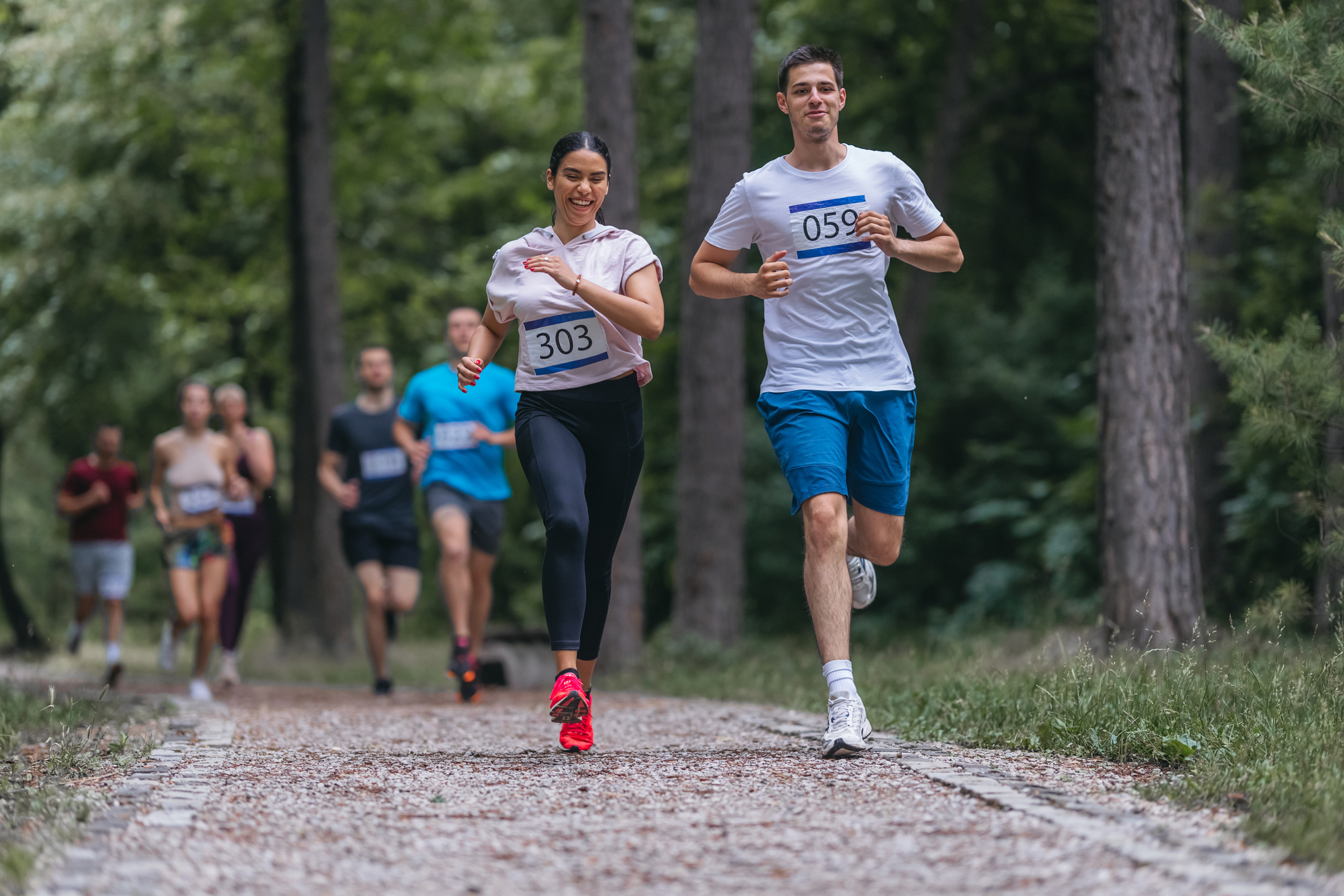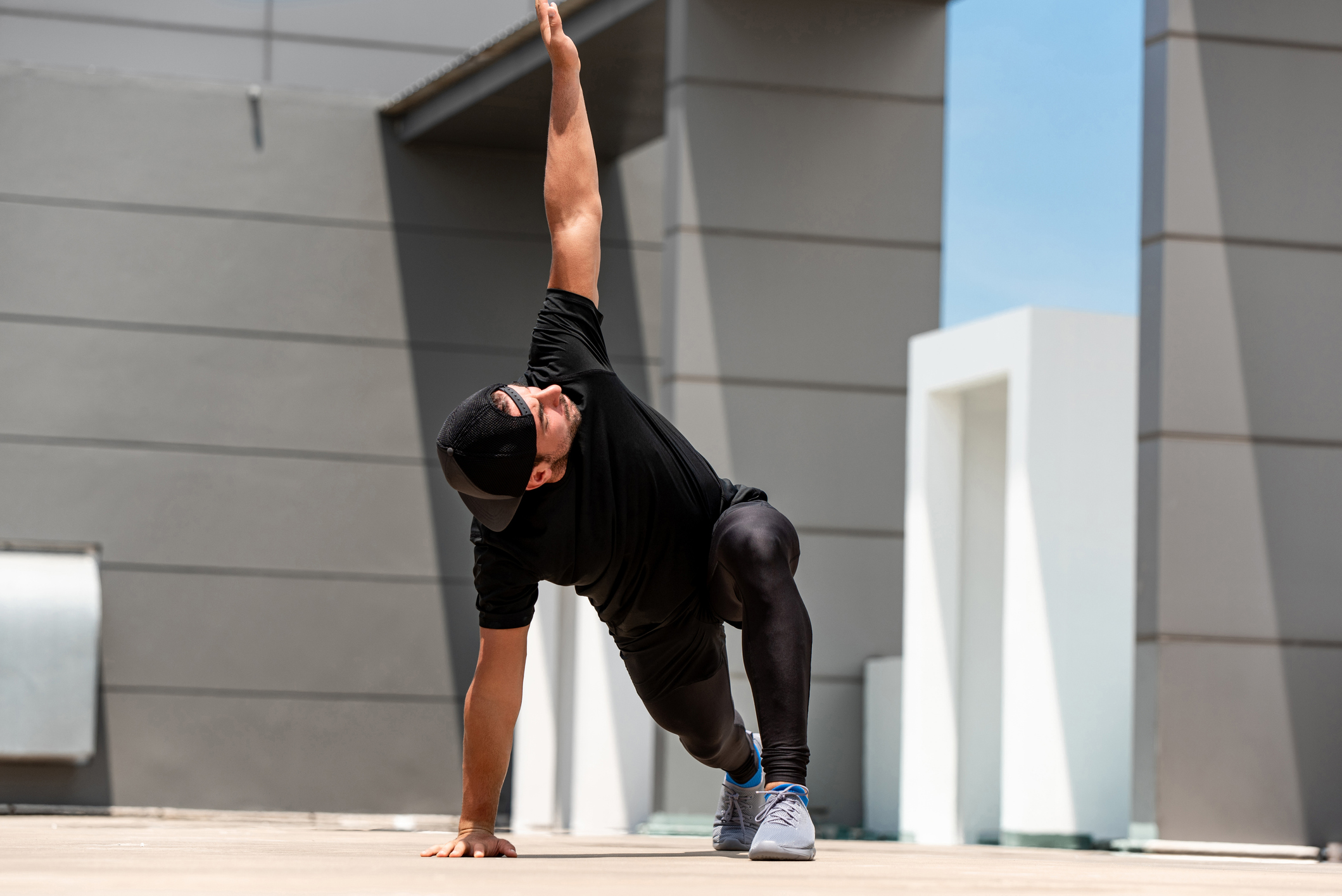Do You Know the 5 Components of Fitness?

The term “physical fitness” is used to characterize everything from a person’s physique to their general health and athletic performance. But while different definitions leave some room for interpretation, there are five basic components of fitness.
These five components of physical fitness consists of cardiorespiratory capacity, strength, endurance, body composition, and mobility.
Learn more about these components and how to develop them down below.
1. Cardiorespiratory Capacity

According to Trevor Thieme, C.S.C.S., cardiorespiratory capacity (a.k.a. aerobic capacity or VO2 max), is the maximum amount of oxygen the body can utilize during intense exercise.
“It relates directly to endurance,” he explains. “The more oxygen your body can utilize, the longer you can maintain a high level of effort.”
How to improve cardiorespiratory capacity
Thieme explains that one of the best ways to increase your aerobic capacity is to train at or near your lactate threshold — the point at which your body starts producing metabolic waste faster than it can remove it.
“If you’ve ever felt a deep burn in your muscles, you know how it feels to reach the lactate threshold,” Thieme explains. This typically occurs at around 80 percent of your maximum heart rate.
You can get there through activities like high-intensity interval training (HIIT), running hills, or playing sports that involve repeated bursts of all-out effort, like basketball and soccer.
2. Strength

Strength is the amount of force you (or more specifically, your muscles) can produce.
Even if you don’t have plans to enter any weightlifting competitions, muscle strength is still an important component of fitness, as it affects your ability to perform everyday tasks like carrying grocery bags and moving furniture.
In fact, the Centers for Disease Control and Prevention recommends that all adults engage in strength training at least two days a week.
How to improve strength
Increased muscle strength comes with resistance training, but you need to be deliberate with your sets, reps, and rest periods, says Jonathan Jordan, CPT, a San Francisco-based trainer and nutrition coach.
“For clients mainly interested in pure strength, I typically keep them in the 3 to 10 reps/4 to 6 sets range, where they’re at or close to failure on the last rep,” he says.
LIIFT MORE, the continuation of Joel Freeman’s LIIFT 4, focuses on compound lifts to help you build muscle and strength, while including HIIT exercises to improve endurance.
Not a fan of pumping iron, or simply don’t have access to barbells and dumbbells? “Bodyweight and gravity are all you need to build strength and muscle as long as you challenge yourself,” says Thieme.
3. Endurance

There are two forms of physical endurance:
- Muscular endurance refers to how long a muscle can perform work before fatiguing. It comes into play when you’re trying to bang out a set of, say, 20 push-ups or 15 curls.
- Cardiorespiratory endurance is the ability of the heart, lungs, and blood vessels to deliver oxygen to working muscles during sustained activity. You rely on it when you go for a long run or perform HIIT.
How to improve endurance
To build muscular endurance, resistance training needs to target type I (a.k.a. slow twitch) muscle fibers. Thieme recommends focusing lighter loads and higher reps.
“In practice, that means doing 4 to 5 sets of a given exercise with a weight that challenges you to complete 12 to 20 reps per set,” he says.
Cardiorespiratory endurance increases by engaging in aerobic activity that challenges your heart and lungs.
You can achieve this via moderate-intensity exercise like long-distance running and cycling, or high-intensity activity like sprinting and interval training.
4. Body Composition

According to Thieme, body composition, the body’s ratio of lean mass to fat mass, is only an accurate indicator of physical fitness when considered in the context of the other components of fitness.
“The reason is that an overweight person who works out consistently is going to be fitter (and healthier overall) than a thin person who never or rarely works out,” he explains. “That said, if you’re overweight, you won’t be considered as fit as your workout partner if that person is leaner than you — even if you perform the same workouts every day — because carrying excess fat stresses the body.”
Body composition can be assessed by a professional, or you can estimate it with a home scale equipped to measure body fat.
Women should aim for a body fat percentage of less than 24. Men should try to get under 17 percent.
How to improve body composition
Body recomposition, the process of changing how your body is composed, usually entails building muscle while losing fat. According to Thieme, anyone looking to reduce their body fat percentage should dial in their diet.
“It’s more important than exercise when it comes to fat loss, but you need both to optimize results,” he says.
Start by reducing your intake of processed foods and eating more veggies, lean protein, and whole grains.
As for exercise, “the most effective form for fat loss is HIIT, followed closely by strength training and distantly by low-intensity cardio, like jogging,” Thieme says. “But as long as you challenge yourself consistently, you will see results.”
DIG DEEPER by Shaun T is specifically designed for body recomposition training, which will help you build muscle and lean down to reveal a more muscular and toned physique.
5. Mobility

Mobility, which encompasses flexibility, refers to your ability to move a joint through its full range of motion.
“Improving your mobility can not only reduce your risk of injury, but also help you unlock greater strength,” says Thieme. “The stronger you are through a full range of motion, the more your strength will translate beyond the weight room.”
How to improve mobility
One of the simplest ways to improve your mobility is to always perform exercises using proper form and a full range of motion (or as close to it as you can).
Stretches and exercises specifically designed to increase mobility can also help, and they should be performed at least a few times a week.
“Rather than spending 60 minutes once a week on mobility, spending 10 minutes every day yields safer, more effective results,” Jordan explains.
Mobility work can easily be incorporated into a warm-up, cool down, or rest-day activity.
Not sure what stretches to do and how to do them? Get specific cues and instructions from world-class yoga instructors with Yoga52 on BODi.
